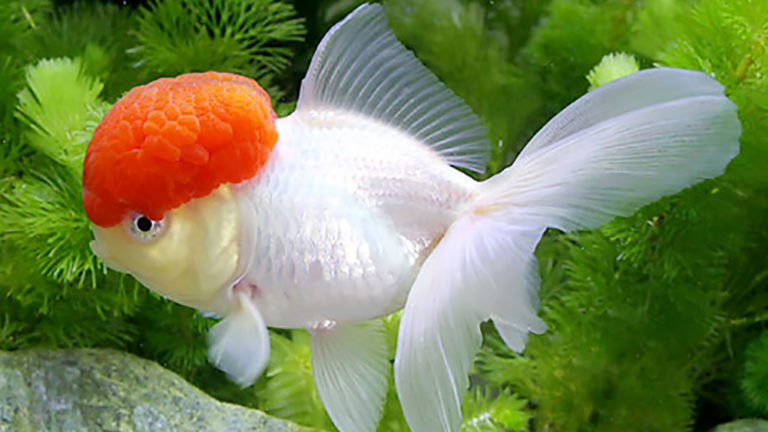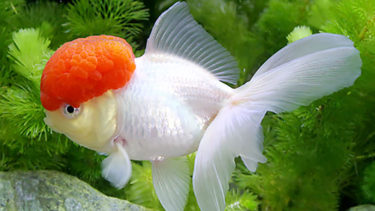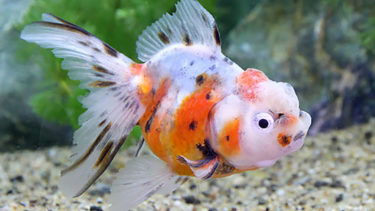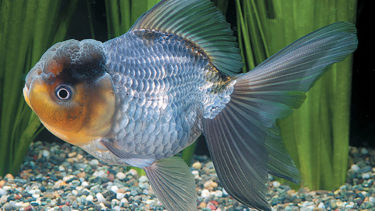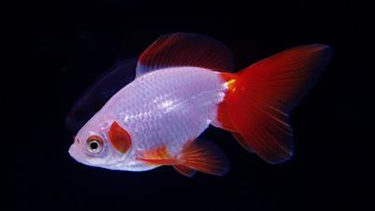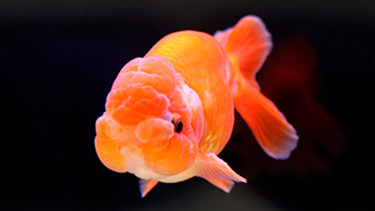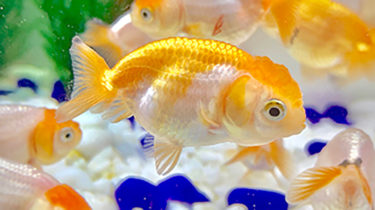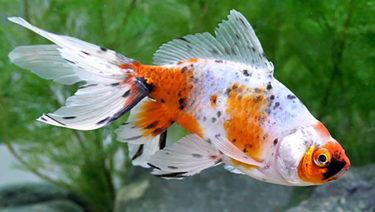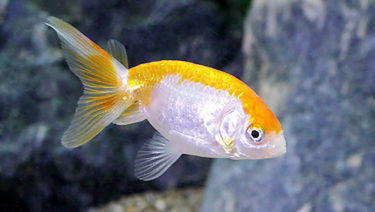Tantyo is a goldfish with the same body shape as the Woran lionhead, but it has a unique body color in which only the fleshy part on top of the head is red and the rest of the body is white. The beauty of the balance between the red part of the head and the white part of the body differs greatly from that of other goldfish. In this article, we would like to explain in detail the characteristics of the tancho and how to keep it.
What is Tancho?
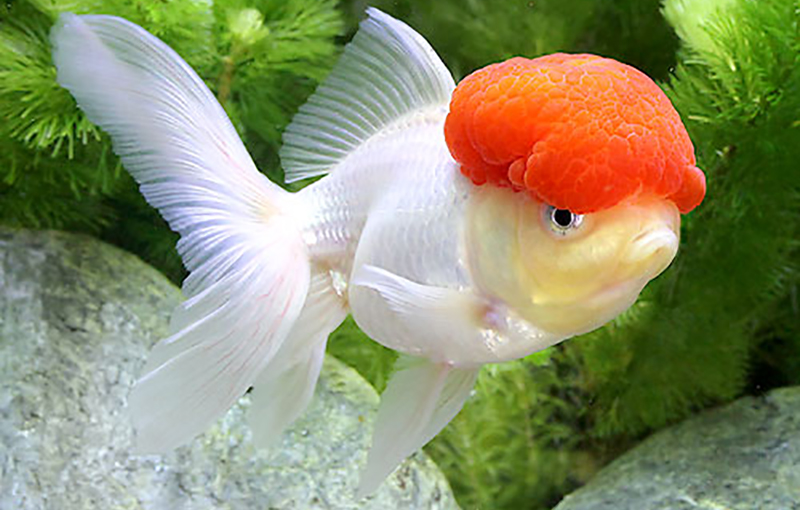
The red-crowned crane has the same body shape and form as the Wolan lion's head. However, unlike the orchid lion's head, the red-crowned crane has a unique body color, with only the mass of flesh on top of the head red and the rest of the body white. This distinctive appearance resembles that of the tancho crane, hence the name tancho.In the past, many Japanese Tancho varieties tended to have small head masses, but now, due to crossbreeding with hat-headed individuals from China, the number of Japanese Tancho with large masses is also increasing.
The orchid lionhead is a goldfish characterized by its caudal fin and head mass. It is a goldfish that can be kept in a variety of ways depending on its body color, the size of the fleshy mass on its head, and the way its tail fin spreads. In this article, we would like to explain in detail the characteristics of the Woran Shishigashira and how to keep it. What is the Woran lionfish [...]
Origin of Tanchou
The tancho is a goldfish that was imported from China to Japan in the 1930s. Since its arrival in Japan, it has been a popular species and has spawned many breeders and enthusiasts. In China, it is known as "Tsurutei Bai Gao-tou" (crane-top red), and even today, you can find it written as "Tsurutei Bing" in some Chinese sales outlets.It is said that around 1893, the prototype of the tancho, the goldfish, was available. Around 1960, after some time had passed since it was imported to Japan, tancho gradually began to gain popularity in China, and the number of producers increased. When they were first imported to Japan, the red part of the tancho varied widely, and it was not uncommon to find red not only on the head but also on the chin and tail fin. However, as they became popular in China, the number of such individuals has been decreasing year by year, and now they are rarely seen.
Many people think that goldfish are the goldfish that you see at fairs and festivals in the summer, and that there are many different kinds of goldfish. And it is no exaggeration to say that each type of goldfish has its own characteristics, and that is the best part about goldfish [...]
How to enjoy Tanchō
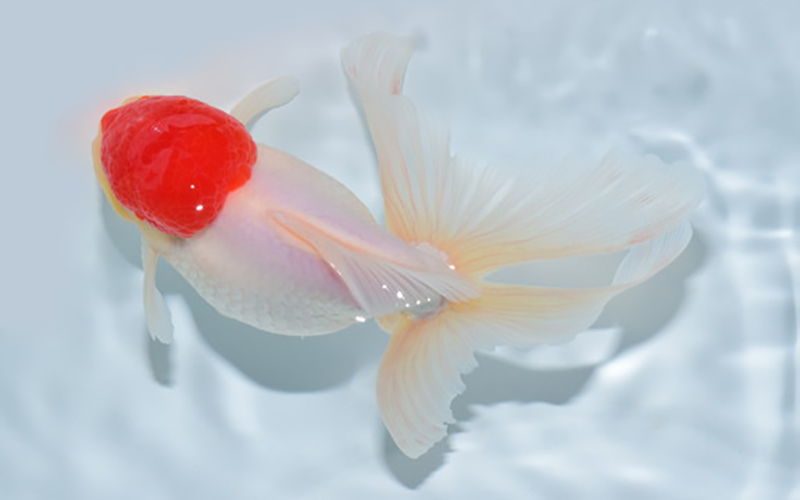
The best way to enjoy tancho is to see the fleshy mass on its head, which is more prominent than in other varieties. To enjoy the beautiful reddish flesh, we recommend viewing it from above (top view) in a pot or other container rather than from the side (side view) in an aquarium or other container.By viewing it from the top, you can see the beautiful size of the tancho's fleshy mass and the balance of its body. Furthermore, you can learn about the beauty of the tancho by looking at the difference between the red and white parts of the body. Of course, there is another way to enjoy tancho that can only be learned by viewing it from the side. When you view a tancho from the side, you can see the phenomenon of the flesh covering the eyes, which occurs when the flesh grows large. When viewing with the upper view, it is sometimes impossible to see the entire face due to the fleshy mass. In such cases, the side view allows us to see the position of the eyes and which part of the face is covered by the flesh mass.
Points to keep in mind when mixing swimmers
When mixing goldfish with other goldfish and other species, there is sometimes uncertainty as to what species is good and what species is not. First,There is no general prohibition against this or that when mixing goldfish with other species.Therefore, depending on the personality and environment of the goldfish you keep, even species that are said to be bad for each other may get along well with each other. However, there is also the matter of compatibility between goldfish. If you put incompatible goldfish together, there is a high possibility that they will fight or that only one of them will monopolize the food. However, as explained in the beginning, there is no prohibition for goldfish, so if you want to mix them, it may be OK to do so. Now, let us explain which goldfish are compatible with Japanese goldfish and which are not.
Compatible goldfish
Goldfish that go well with the Tantyo are Dutch type goldfish such as the Dutch Lionhead (Holland Shishigashira) and Azumanishiki (Azuma Nishiki).The Dutch type goldfish is characterized by the fleshy mass on the head that develops as it grows and the beautiful tail fin that is as beautiful as the Ryukin type, so we recommend that you compare the growth changes of each variety.
About the Woran Lion Head
About Us
About Dutch Type
Incompatible goldfish
Goldfish that are incompatible with the Tanchou are Ranchu-type goldfish such as the Ranchu and Edonishiki.Many ranchu-type goldfish are poor swimmers, and if they are mixed with tanchou goldfish, the tanchou may take the ranchu-type goldfish's food. If you do mix them with the Ranchu type goldfish, please be careful that the Ranchu type goldfish are able to eat the food.
About Ranchu
About Edo Nishiki
About Ranchu Type
What to keep in mind when keeping a tannery
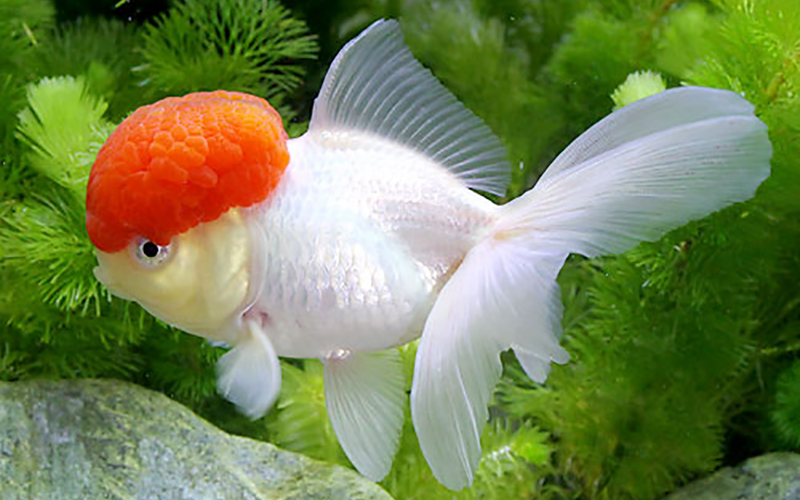
Tanchos have a striking appearance, with only the head mass in red and the rest of the head white. The characteristic head mass gets larger with age, and at two or three years of age, the mass can be seen on very large and beautiful individuals. However, as the size of the head mass increases, the movement of the Tancho itself slows down, so when it is mixed with other goldfish, it may be eaten by other goldfish when it goes to feed, and the slow-moving Tancho may not be able to feed.Therefore, we recommend that you keep Tanchou with a large mass by itself, or keep it with a slow-moving Ranchu-type goldfish when the mass has grown to a certain degree. There is one more thing to keep in mind when keeping a Tanchou with a large nuchal mass. In the worst case, the left and right sides may become unequal. And if one side is nibbled too much, the goldfish itself will not be able to maintain its balance and will turn its belly upward more and more, like an overturned fish. So, please observe frequently to see if other goldfish are gnawing on the meatballs.

